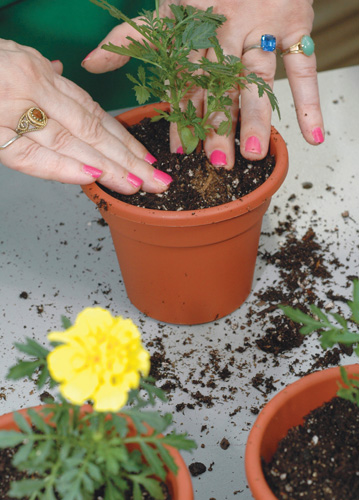Container Gardens the Ideal for Apartment Dwellers

|
Well-planned container gardens allow apartment dwellers to maximize the space they may have on a small patio or balcony and turn it into a lush, green area. Containers enable gardeners to maintain control of plants when there is no available ground for planting. Also, you can move the containers to get the best sun exposure.
There are other advantages to container gardening apart from small space requirements. Watering potted plants is more efficient because usually you will have to do it by hand if you live in an apartment. This ensures that you meet the watering needs of each plant individually and do not under- or over-water flowers or plants. Also, because they are not directly in the ground, plants in containers are less prone to insect pests.
Less is certainly more when it comes to container gardens, particularly in a small space. As your plants grow, if you have too many in a tight space it could soon look cluttered and over-run. Keep your space in mind when determining how many pots to buy and what styles. You could maximize floor space by getting planters that are suspended from overhangs, or planting boxes that rest on racks, which hang on railings. Choose cascading plants for these off-the-ground areas.
Planting Your Container Garden
1. When you are ready to begin your container garden, first look at your space and plot out the location of your plants on paper. This way you can take your "map" to the garden center and purchase pots and accessories that will fit.
2. Items on your purchase list should include your flower pots, a small shovel, potting soil, compost, a small bag of rocks, a watering can, and fertilizer.
3. You can start seedlings indoors in small containers (even in an empty egg container) and transplant your plants outdoors when they have grown. Or, you can purchase plants from the garden center already started.
4. Take your flower pot or other container and place a few rocks over the drainage holes at the bottom so you won't have the soil stream out rapidly when watering.
5. Partially fill the pot with compost. You can add a slow-release fertilizer at this time. Fill the remaining amount of space with the potting soil.
6. Create a hole in the middle of the soil and place your plant. If the roots are tightly wound in your starter plant, loosen the roots before planting in the container. Fill the soil around to cover the roots.
7. Water the plants and allow them to drain. Arrange your containers based on the plants' needs in sunlight.
8. Remember, container plants will most likely need to be watered on a daily basis.
9. Don't rule out the possibility of growing vegetables and herbs in your container garden. Cucumbers, tomatoes, peppers, and beans grow very well in containers.
With just a little imagination and know-how any small patio or balcony can be the perfect spot for a lush container garden.






